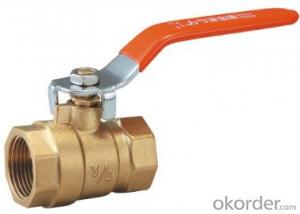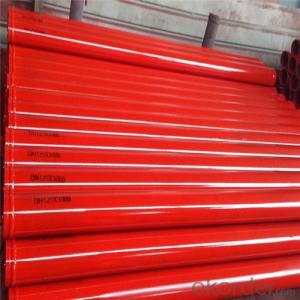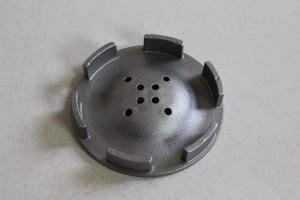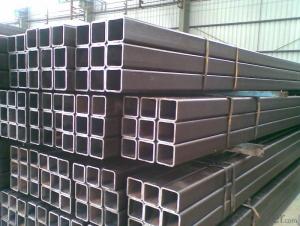Weld Stainless Steel
Weld Stainless Steel Related Searches
Best Paint For Stainless Steel Blanket Insulation For Steel Buildings Primer For Galvanized Steel Foam Filter For Stainless Steel H S Code For Stainless Steel Surface Grinding Wheels For Stainless Steel Surface Grinding Wheels For Hardened Steel Hole Saw For Stainless Steel Paint For Stainless Steel Stainless Steel For BbqHot Searches
Steel Mesh Panels For Sale Price For Stainless Steel Scrap Scrap Price For Stainless Steel Price For Stainless Steel Stainless Steel Tank For Sale Stainless Steel Sheets For Sale Cheap High Tea Sets For Sale Stainless Steel Tanks For Sale Stainless Steel For Sale High Density Fiberboard For Sale Solar Hot Water Collectors For Sale Scaffolding For Sale In Uae Scaffolding For Sale In Ireland Scaffolding For Sale In Houston Type Of Inverter For Solar Price Of Shipping Containers For Sale Types Of Inverter For Solar Stock Price For Aluminum Used Solar Inverter For Sale Steel Mesh Panels For SaleWeld Stainless Steel Supplier & Manufacturer from China
Okorder.com is a professional Weld Stainless Steel supplier & manufacturer, offers integrated one-stop services including real-time quoting and online cargo tracking. We are funded by CNBM Group, a Fortune 500 enterprise and the largest Weld Stainless Steel firm in China.Hot Products
FAQ
- Various industries choose stainless steel sheets because they offer several advantages over other types of sheet metals. Firstly, stainless steel sheets possess excellent corrosion resistance properties, which are crucial in environments where exposure to moisture or chemicals is common. This corrosion resistance ensures that stainless steel sheets maintain their structural integrity and aesthetic appeal over a long period of time. Another important advantage of stainless steel sheets is their high strength-to-weight ratio. Stainless steel is well-known for its durability and strength, allowing manufacturers to use thinner sheets without sacrificing structural integrity. This not only reduces material costs but also makes stainless steel sheets easier to handle and install. Furthermore, stainless steel sheets are highly versatile and can be customized to meet specific requirements. They can be easily formed, welded, and fabricated into different shapes and sizes, making them suitable for a wide range of applications. Stainless steel sheets are available in various finishes, such as brushed, mirror, or satin, allowing for aesthetic customization as well. In terms of hygiene, stainless steel sheets offer exceptional cleanliness and ease of maintenance. Their smooth, non-porous surface prevents the accumulation of bacteria, dirt, or contaminants, making them suitable for applications in the food and healthcare industries. Additionally, stainless steel sheets are resistant to high temperatures, making them ideal for use in heat-intensive applications such as industrial ovens or automotive components. Lastly, stainless steel sheets have good sustainability credentials. They are 100% recyclable, allowing for the conservation of resources and reduction of environmental impact. Moreover, stainless steel is composed of a high percentage of recycled content, further enhancing its eco-friendly characteristics. Overall, stainless steel sheets surpass other types of sheet metals in terms of corrosion resistance, strength-to-weight ratio, versatility, hygiene, and sustainability. These qualities make stainless steel sheets the top choice for applications in various industries, including construction, automotive, aerospace, food processing, and more.
- To remove rust or corrosion from stainless steel sheets, you can follow these steps: 1. Start by cleaning the surface of the stainless steel sheet with a mild detergent and warm water. This will remove any dirt or grease that could potentially interfere with the rust removal process. 2. After cleaning, thoroughly dry the sheet to prevent any further water damage and to ensure the rust removal process is effective. 3. Next, use a non-abrasive scrubbing pad or a soft cloth to apply a stainless steel cleaner or a homemade solution made of equal parts vinegar and water. Gently rub the affected area in the direction of the grain of the stainless steel. 4. If the rust or corrosion persists, you can try using a paste made of baking soda and water or a mixture of cream of tartar and water. Apply this paste to the affected area and let it sit for about 15 minutes. Then, scrub the area gently with a soft cloth or a non-abrasive scrubbing pad. 5. If the above methods do not fully remove the rust or corrosion, you can try using a commercial rust remover specifically designed for stainless steel. Be sure to follow the instructions provided by the manufacturer and use appropriate safety precautions. 6. After removing the rust or corrosion, rinse the stainless steel sheet thoroughly with clean water and dry it completely to prevent any water spots or further damage. 7. To prevent future rust or corrosion, it is recommended to regularly clean and maintain stainless steel surfaces using non-abrasive cleaners and avoiding harsh chemicals or abrasive materials. Remember to always test any cleaning solution or rust remover on a small, inconspicuous area of the stainless steel sheet before applying it to the entire surface, to ensure it doesn't cause any damage or discoloration.
- Stainless steel sheets resist corrosion due to their unique composition and protective oxide layer. Stainless steel is made up of iron, chromium, and other alloying elements such as nickel and molybdenum. The presence of chromium in stainless steel is crucial for its corrosion resistance. When exposed to oxygen, chromium forms a thin and invisible oxide layer on the surface of the stainless steel, known as the passive layer. This passive layer acts as a barrier that prevents oxygen and moisture from reaching the underlying metal, thus protecting it from corrosion. It is this layer that gives stainless steel its name, as it remains "stainless" or free from rust and corrosion. The chromium oxide layer is self-repairing and can reform if damaged or scratched, ensuring the continued protection of the stainless steel. This property allows stainless steel sheets to be used in various environments, including those with high humidity, exposure to chemicals, and even saltwater. Additionally, the alloying elements like nickel and molybdenum enhance the corrosion resistance of stainless steel. Nickel increases the stability and strength of the passive layer, while molybdenum improves resistance to pitting and crevice corrosion. Furthermore, stainless steel sheets can be further protected against corrosion through surface finishes, such as polishing or passivation. These processes remove any contaminants or impurities from the surface and promote the formation of a more robust and uniform passive layer. Overall, the combination of chromium, other alloying elements, and the protective oxide layer make stainless steel sheets highly resistant to corrosion, providing durability and longevity in various applications.
- Due to their exceptional properties and versatility, stainless steel sheets find extensive use in various industries. The construction industry, for example, commonly utilizes stainless steel sheets for roofing, cladding, and decorative purposes, as they offer durability, corrosion resistance, and an aesthetically pleasing appearance. In the automotive industry, stainless steel sheets are extensively used for manufacturing body panels, exhaust systems, and various components. This is due to their high strength, heat resistance, and corrosion resistance properties. Additionally, stainless steel sheets are also employed in the production of fuel tanks and other critical components in the transportation sector. The food and beverage industry heavily relies on stainless steel sheets for fabricating food processing equipment, storage tanks, and pipelines. Stainless steel sheets are preferred in this industry because of their resistance to corrosion, ability to withstand extreme temperatures, and adherence to high cleanliness standards, ensuring hygienic and safe food processing. Similarly, the medical and pharmaceutical industries extensively use stainless steel sheets for manufacturing surgical instruments, medical devices, and equipment. This is because stainless steel sheets offer corrosion resistance, biocompatibility, and ease of sterilization. The energy sector, including oil and gas, power generation, and renewable energy industries, also commonly employs stainless steel sheets. These sheets are utilized for constructing pipelines, storage tanks, and various equipment in these industries due to their resistance to corrosion, high temperature, and pressure. Furthermore, stainless steel sheets are commonly used in the aerospace, marine, chemical processing, and architectural industries. This is because stainless steel sheets provide the required strength, durability, and resistance to harsh environments in these sectors. In conclusion, stainless steel sheets are extensively utilized in a wide range of industries due to their exceptional properties. This makes them the preferred choice for various manufacturing and construction needs.
- The common sizes of stainless steel sheets vary, but some common dimensions include 4 feet by 8 feet, 5 feet by 10 feet, and 4 feet by 12 feet.
- Yes, stainless steel sheets can be used for escalator steps. Stainless steel is a popular choice for escalator steps due to its durability, strength, and resistance to corrosion. It can withstand the constant foot traffic, heavy loads, and the wear and tear that escalator steps are subjected to on a daily basis. Additionally, stainless steel has a sleek and modern appearance, which adds to the overall aesthetic appeal of escalators. This makes stainless steel sheets a reliable and practical choice for escalator steps in various commercial and public settings.
- There are several measures that can be taken to prevent pitting corrosion on stainless steel sheets: 1. It is crucial to select the proper alloy. Choosing a stainless steel grade with high resistance to corrosion, such as 316 or 904L, is essential. 2. Passivation is necessary after fabrication. This process involves treating the sheets with an acid solution, rinsing thoroughly, and drying. It helps restore the protective chromium oxide layer on the surface, enhancing corrosion resistance. 3. Regular cleaning and maintenance are important. Stainless steel sheets should be cleaned regularly using mild soap, water, and a soft cloth or sponge. Harsh cleaners should be avoided. 4. It is crucial to avoid exposure to aggressive environments. Stainless steel sheets should be protected from chemicals, chlorides, acids, and other corrosive substances. If exposure is unavoidable, protective coatings or barriers should be used. 5. Stagnant or low-flow conditions should be avoided. Pitting corrosion is accelerated in such conditions where oxygen levels are depleted. Proper ventilation and circulation of air or fluids can prevent pitting corrosion. 6. Regular inspection and maintenance are necessary. Periodic visual inspection helps identify early signs of pitting corrosion. Immediate action should be taken to address any pitting, such as applying a suitable corrosion inhibitor or protective coating. By following these preventive measures, the risk of pitting corrosion on stainless steel sheets can be minimized, ensuring their long-term durability and performance.















































